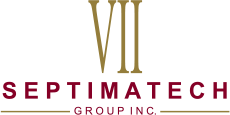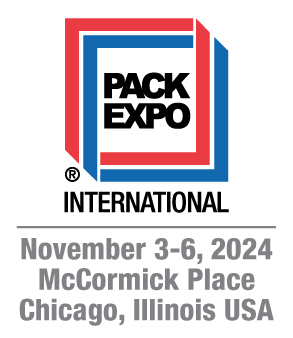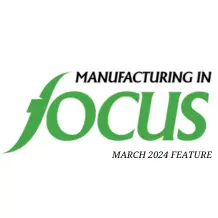The hard-working feed screw could be the most unsung hero of your packaging line.
A well-designed, properly maintained feed screw—also known as timing screws—can improve OEE and throughput while reducing product loss, changeover time, and damage to products. On the flipside a hard working poorly designed and maintained feed screw limits production, wears out prematurely, and results in a lot of untapped productivity on your line. For example, one of our beverage customers reported an 80% reduction in product waste and a 20% increase in line speed after installing Septimatech feed screws.
So how do you ensure that your feed screws are performing at peak, heroic performance, and not just merely hard working? Here are a few best practices that may help your feed screws be the hero you’re looking for to improve production and your bottom line.
The Correct Feed Screw for Your Application is Just the Minimum Requirement.
There are many different types of feed screws suited for a wide range of applications, such as feeding, separating, and timing; tilting, inverting, rotating, and twisting; grouping and dividing; synchronizing, orientating, and turning; and high speed operation. Having the correct feed screw for your application is crucial, but it’s just a starting point. Feed screw performance turns on multiple factors involving your container, line setup, machine condition, and of course feed screw design and build quality. An experienced container handling expert can help you navigate key factors, so you achieve maximum performance from your feed screw investment.
Containers: Container geometry, material, mass, and stability have a direct impact on how the container will react while being handled by the feed screw, including transfers to it and handoffs to the machine. Conveyor infeed speeds, guide rail setup and type, and desired container orientation also come into play.
Container geometry impacts the pocket size, shape, and depth, as well as the pitch and angle of the feed screw. Certain container shapes and sizes are more prone to tipping and shingling. Overcoming these tendencies can be achieved by controlling the centerline height of the feed screw and ensuring that the feed screw design works in unison with conveyors, guides, machine, and line speeds.
Conveyors, Guides and Line Speed: Sometimes for the same line speed, container material, and machine operating parameters, the conveyor speed and guides may have to be adjusted to obtain better performance and container handling. This partially is due to the difference in surface area and weight for various containers. Miscellaneous dirty spots, rough edges and damaged areas on the conveyor track may also inhibit the performance, especially at higher speeds. Improper speed settings may also create excessive back pressure which reduces feed screw performance and potentially deforms container shape resulting in damaged containers and crashes or jams between the F/S and containers.
Guide rail positioning/setup, clearances, and condition aid in container stability and ease of conveying. Proper guide rail setting ensures fast, accurate, and smooth container transfer to feed screw pockets which prevent the container from skipping past the flights. Miscellaneous dirty spots, rough edges, and damaged sections on the guide rail will also likely inhibit performance, especially at higher speeds.
Septimatech works closely with its feed screw customers to establish ideal parameters for infeed guiderail rail settings, conveyors, and speeds to get optimum performance.
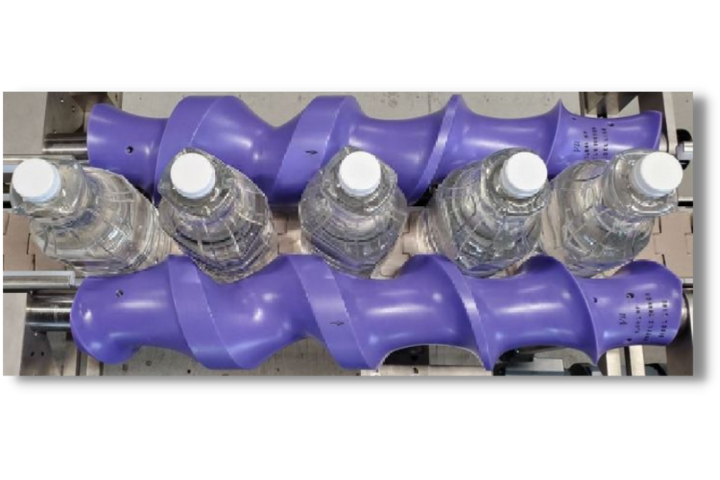
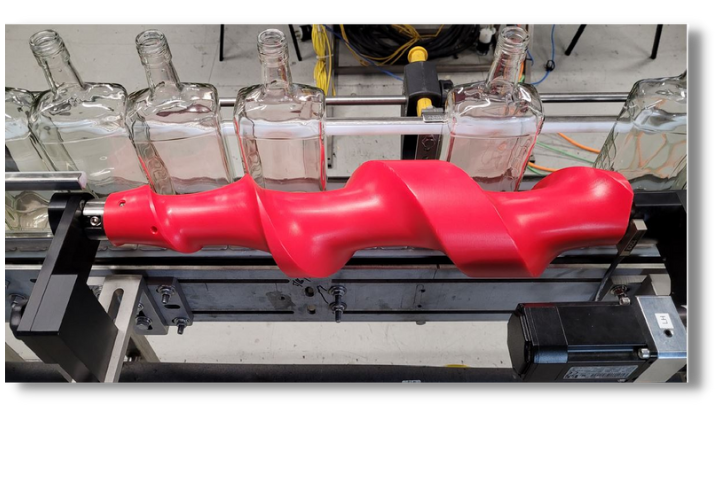
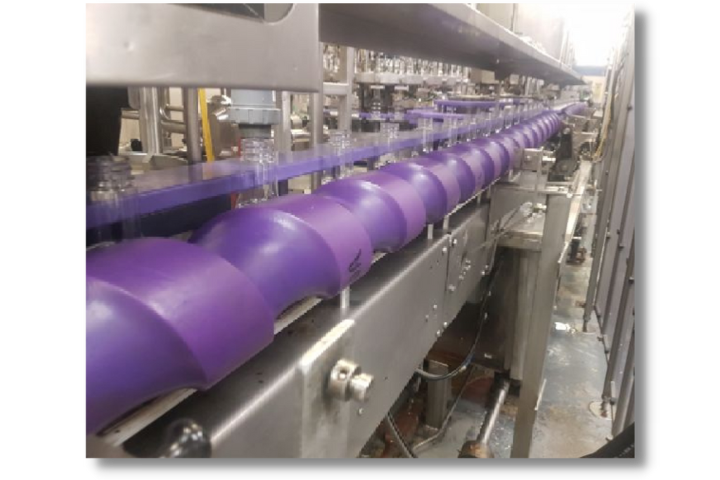
Machine Condition: When designing your feed screw it’s important to take into consideration, the condition, age, and speed of your machine. For example, wear on a machine’s drive assembly may cause surges which lead to containers accelerating and decelerating within the feed screw. Or perhaps, the machine’s original specifications were built for a different size or type of container. Within limits, there are options in feed screw design and setups of your machine and guides to achieve optimum performance and dependability for your existing assets. If applicable, options may also exist for updated feed screw drive systems and change parts to improve performance.
The key is having a supplier that works with you to understand your performance goals and help you get the best performance possible with your budget and available assets. Septimatech performs digital simulations and testing of all recommendations and their projected impact on performance.
Feed Screw Build Quality: Design and materials matter in feed screw build. Smooth, low friction surfaces prevent scuffing and marking on labels and containers. Lightweight, durable materials provide long-wear, abrasion resistant life and improved ergonomics. Washdown inert materials allow easy, thorough cleaning.
Feed screws that are color-coded and custom engraved for easy identification help ensure that you install the correct feed screw for each container and application, preventing unnecessary downtime and potential product loss. Tool-less, quick-change feed screws ensure efficient, correct, repeatable installation.
Septimatech manufactures feed screw solutions for a wide range of consumer, industrial, and pharmaceutical companies worldwide. We’ve built long-time relationships with our customers based on build quality, attention to detail, response time to ensure superior container handling and throughput.

Maintain, Store, and Install Your Feed Screws Properly:
Quality feed screws will provide long continuous service. Proper care and storage will extend the life of your feed screws and help ensure precise, continuous container handling at optimum speed.
Change parts storage carts ensure your feed screws are safely stored, always organized and ready for use. Storage carts improve changeover efficiency, transport, and ergonomics, while reducing the risk of lost or damaged parts. Many carts also allow on-cart washdown and provide 5-S storage to support your specific changeover demands.
During container changeover, it is a good best practice to make sure all feed screw, machine, conveyor, guide rails, and feed screw drive settings are correct and at optimum specifications for your container and the speeds you require. For maximum performance, it’s important that all your container handling components and machine are working in unison. Frequently minor adjustments to guide rails, machine speeds, or feed screw alignment can improve performance. Our container handling and changeover experts work closely with you during the design, simulation, and commissioning phases to determine ideal set up parameters for you to achieve maximum performance.

How Can Septimatech Help?
Our industry leading experience in container control and positioning combined with state-of-the art manufacturing, simulation and testing ensure you receive feed screws with superior pocket-to-pocket accuracy, container flow, timing, and sequencing. We offer quick lead times and cost-effective solutions for all your feed screw applications, regardless of container size and shape or machine make and model.
Improving container handling and reducing downtime are our passions. We work closely with you to understand your machine’s existing physical condition, products, line functions, and desired throughput to ensure you receive optimum performance from your feed screws and existing assets. Septimatech feed screw customers frequently report double-digit improvements in OEE, throughput, changeover time, and product loss or damage.
